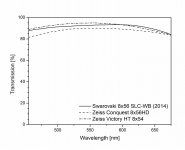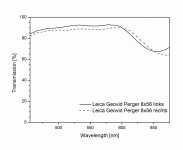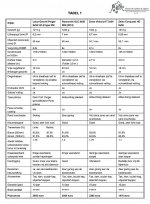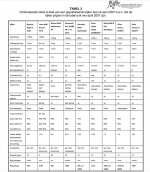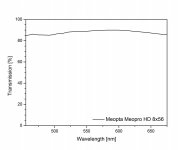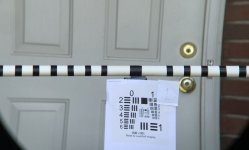Did I imagine it or did things really go bump in the night?
Tom,
Thanks for sharing your observations. I think it's a fairly natural to assume that resolution and sharpness are the same thing, but it fact they are quite different. Though I quess we all mix up the terminology from time to time.
It has been customary for manufacturers (and one or two here) to measure the optical resolution of a binocular. That is the limit of resolvable detail at full objective diameter. That diameter effectively changes as we put the binocular to our eyes. In bright conditions the iris of the eye blocks the peripheral light from the objective, reducing the affective objective diameter and altering the aberration profile and effective resolution. When Henry checked the HT 8x54 he found the performance to be unusually poor stopped down, particularly when compared to his FL 8x56.
Sharpness is a visual perception. To put it one way, it's your brain's ability to decipher the detail delivered by the binocular. Perhaps not surprisingly, work done Eastman Kodak in the 60s found that we were able to interpret an image more clearly when the detail was a bit bigger and with greater contrast and came up with an optimum for 'sharpness' of about 5 to 10 arcminutes. Compared to normal visual acuity in the 1 to 2 arcminute range it's 5 to 10 times coarser detail. Optical engineers routinely analyse resolution and sharpness by a method called MTF analysis for full aperture, but apparently not for the effective objective diameter in bright condition. Colour, stray light and other factors contribute to the sharpness story, but I'll skip those for now.
It is possible for those with very good eyesight to detect the resolution limit of some binoculars. My visual estimate was around 20/12 acuity for the HT 8x54 I tried, but as Henry notes, the FL is a much better binocular stopped down. However I note your comparison was approaching dusk. Our eyesight gets significantly worse as the light level decreases and it would be pretty much impossible for anyone to spot the effective resolution differences of those binoculars in low light. I can well believe you saw differences in sharpness, which is good to know.
Cheers,
David






